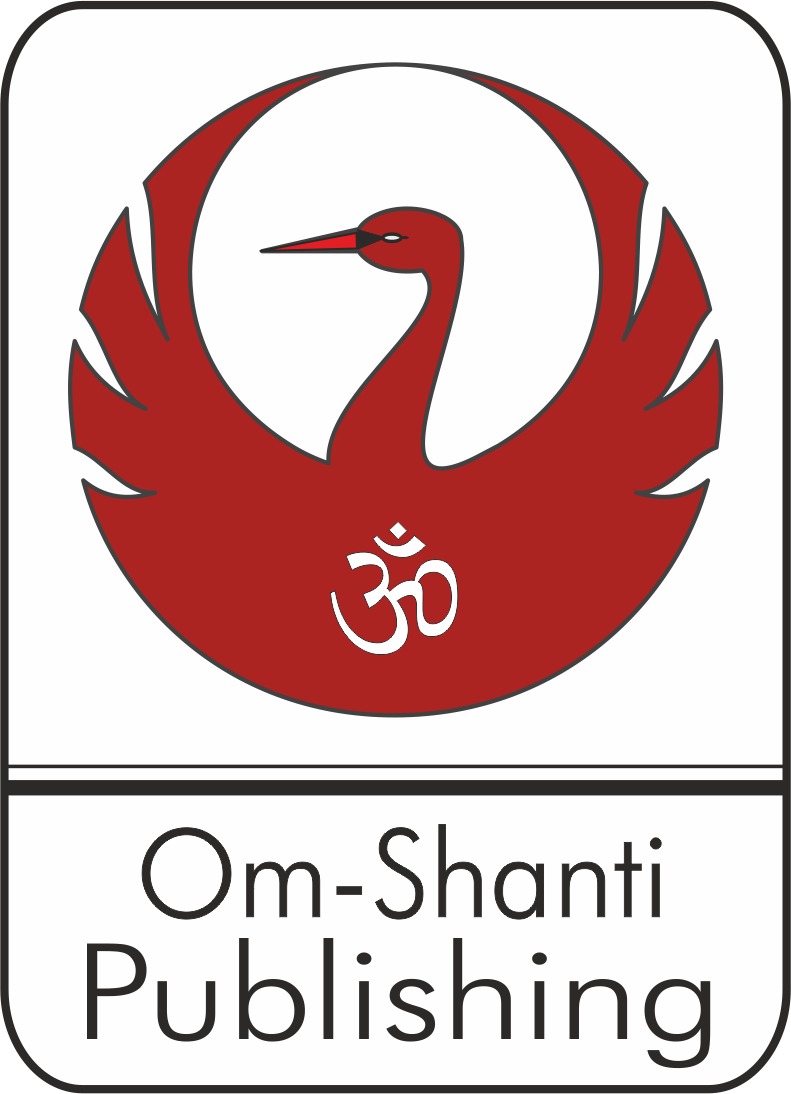
INFO PAPER - ALGEMEEN

Om-Shanti - Bhagavad Gita
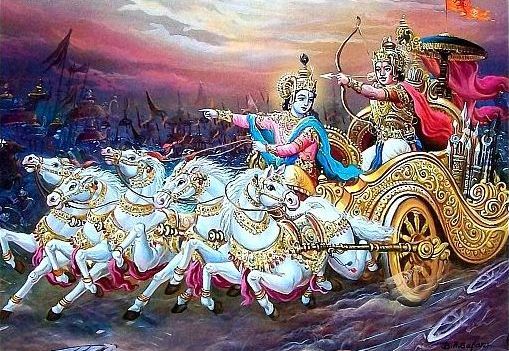
De Bhagavad-Gita is een heel bijzonder spiritueel boek dat inmiddels duizenden jaren oud is, maar nog steeds relevant voor mensen die antwoorden zoeken op de existentiële levens-vragen. Srimad wordt vaak voor de Bhagavad-Gita geschreven als een teken van respect.
In achttien hoofdstukken en 700 versen wordt verslag gedaan van een dialoog tussen de zoekende mens (Arjuna) en het Hogere Zelf (God of de Werkelijkheid). Sinds enkele eeuwen bestaat er een steeds groeiende belangstelling bij wetenschappers, theologen, filosofen, ethici, psychologen, intellectuelen, kunstenaars en spirituele zoekers uit Oost en West.
De (westerse) mens kan nog veel leren over hoe men in contact kan komen met de “Stem van z’n Hart” (in een lagere vorm intuïtie genoemd) om de antwoorden te vinden op de belangrijke levensvragen. Zonder deze antwoorden leeft hij in onwetendheid en mist hij meestal innerlijke harmonie en spirituele rust.
De studie van de Bhagavad-Gita vraagt meestal vele jaren van studie en begeleiding samen met het beoefenen van de praktische aanwijzingen, deze verwijzen onder andere naar de verschillende vormen van Yoga.
Hieronder vindt u een kort overzicht van mensen uit Oost en West die geïnspireerd zijn geraakt door de inhoud van de Bhagavad-Gita. Inmiddels groeit deze lijst met westerse wetenschappers met name uit de quantum fysica.
Beroemde mensen en hun uitspraken over de Bhagavad Gita
Albert Einstein (14-03-1879 - 18-04-1955): "When I read the Bhagavad-Gita and reflect about how God created this universe everything else seems so superfluous".
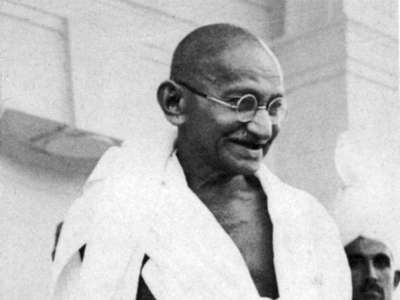
Mahatma Gandhi ( 02-10-1869 - 30-01-1948): "When doubts haunt me, when disappointments stare me in the face, and I see not one ray of hope on the horizon, I turn to Bhagavad-gita and find a verse to comfort me; and I immediately begin to smile in the midst of overwhelming sorrow. Those who meditate on the Gita will derive fresh joy and new meanings from it every day".
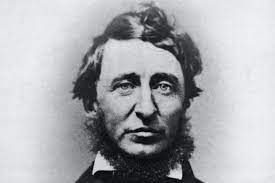
Henry David Thoreau (12-07-1817 - 06-05-1862): "In the morning I bathe my intellect in the stupendous and cosmogonal philosophy of the Bhagavadgita, in comparison with which our modern world and its literature seem puny and trivial".

Dr. Albert Schweitzer (14-01-1875 - 04-09-1965): "The Bhagavad-Gita has a profound influence on the spirit of mankind by its devotion to God which is manifested by actions".
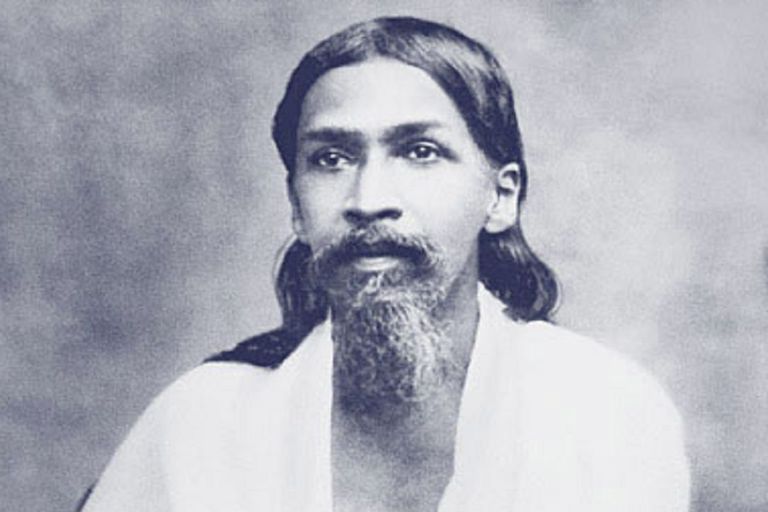
Sri Aurobindo (15-08-1872 - 05-12-1950): "The Bhagavad-Gita is a true scripture of the human race a living creation rather than a book, with a new message for every age and a new meaning for every civilization".
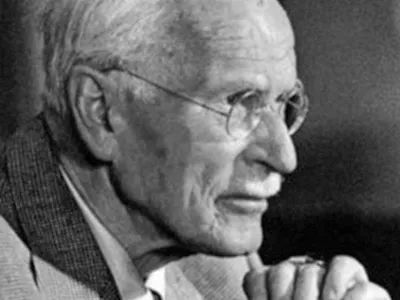
Carl Jung (26-07-1875 - 06-06-1961): The idea that man is like unto an inverted tree seems to have been current in by gone ages. The link with Vedic conceptions is provided by Plato in his Timaeus in which it states..." behold we are not an earthly but a heavenly plant." This correlation can be discerned by what Krishna expresses in chapter 15 of Bhagavad-Gita.
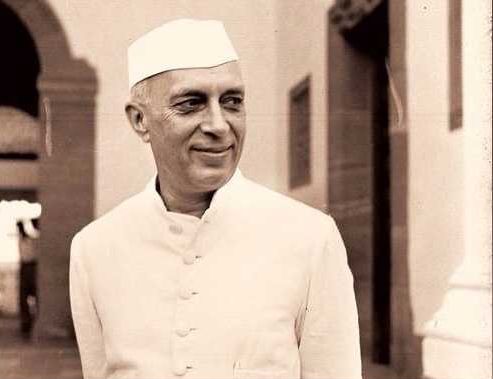
Prime Minister Nehru (14-11-1889 - 27-05-1964): "The Bhagavad-Gita deals essentially with the spiritual foundation of human existence. It is a call of action to meet the obligations and duties of life; yet keeping in view the spiritual nature and grander purpose of the universe".
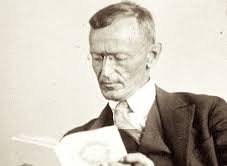
Herman Hesse (02-07-1877 - 09-08-1962): "The marvel of the Bhagavad-Gita is its truly beautiful revelation of life's wisdom which enables philosophy to blossom into religion".

Ralph Waldo Emerson (25-05-1803 - 27-04-1882): "I owed a magnificent day to the Bhagavad-gita. It was the first of books; it was as if an empire spoke to us, nothing small or unworthy, but large, serene, consistent, the voice of an old intelligence which in another age and climate had pondered and thus disposed of the same questions which exercise us".
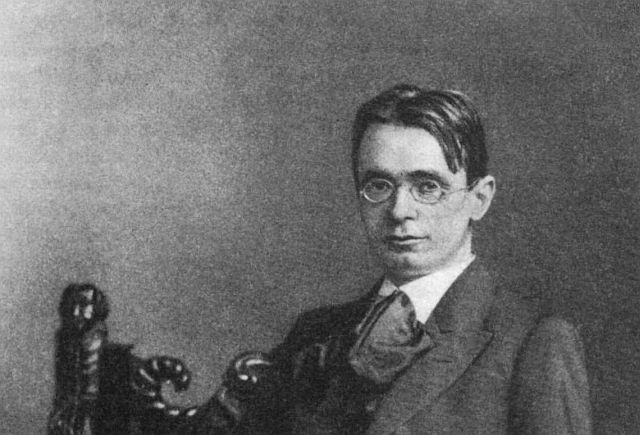
Rudolph Steiner (25 or 27-02-1861 - 30-03-1925): "In order to approach a creation as sublime as the Bhagavad-Gita with full understanding it is necessary to attune our soul to it".

Adi Shankara (8th century Current Era): "From a clear knowledge of the Bhagavad-Gita all the goals of human existence become fulfilled. BhagavadGita is the manifest quintessence of all the teachings of the Vedic scriptures".
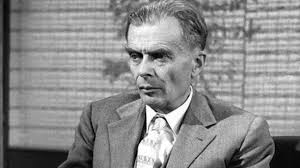
Aldous Huxley (26-07-1894 - 22-11-1963): "The Bhagavad-Gita is the most systematic statement of spiritual evolution of endowing value to mankind. It is one of the most clear and comprehensive summaries of perennial philosophy ever revealed; hence its enduring value is subject not only to India but to all of humanity".
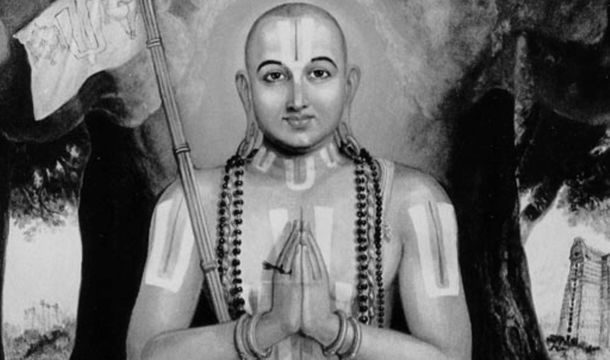
Ramanuja (1017 - 1137 Current Era): "The Bhagavad-Gita was spoken by Lord Krishna to reveal the science of devotion to God which is the essence of all spiritual knowledge. The Supreme Lord Krishna's primary purpose for descending and incarnating is relieve the world of any demoniac and negative, undesirable influences that are opposed to spiritual development, yet simultaneously it is His incomparable intention to be perpetually within reach of all humanity".
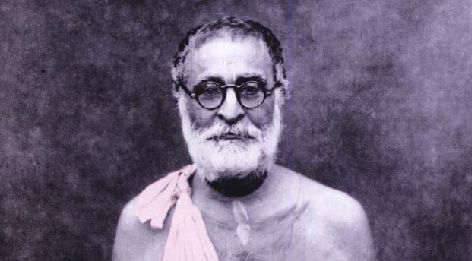
Bhaktisiddhanta Saraswati (06-02-1874 - 01-01-1937:
The Bhagavad-Gita is not seperate from the Vaishnava philosophy and the Srimad Bhagavatam fully reveals the true import of this doctrine which is transmigation of the soul. On perusal of the first chapter of Bhagavad-Gita one may think that they are advised to engage in warfare.
When the second chapter has been read it can be clearly understood that knowledge and the soul is the ultimate goal to be attained. On studying the third chapter it is apparent that acts of righteousness are also of high priority. If we continue and patiently take the time to complete the Bhagavad-Gita and try to ascertain the truth of its closing chapter we can see that the ultimate conclusion is to relinquish all the conceptualized ideas of religion which we possess and fully surrender directly unto the Supreme Lord.
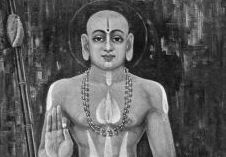
Madhvacarya (1199 - 1238 or 1278 - 1317): The Mahabharata has all the essential ingredients necessary to evolve and protect humanity and that within it the Bhagavad-Gita is the epitome of the Mahabha-rata just as ghee is the essence of milk and pollen is the essence of flowers.
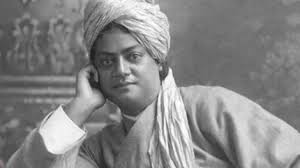
Swami Vivekananda (12-01-1863 - 04-07-1902): Swami Vivekananda evinced much interest in Bhagavad Gita. It is said, Bhagavad Gita was one of his two most favourite books (another one was The Imitation of Christ). In 1888-1893 when Vivekananda was travelling all over India as a wandering monk, he kept only two books with him - Gita and Imitation of Christ.

J. Robert Oppenheimer (22-04-1904 - 18-02-1967): American physicist and director of the Manhattan Project, learned Sanskrit in 1933 and read the Bhagavad Gita in the original form, citing it later as one of the most influential books to shape his philosophy of life. Oppenheimer later recalled that, while witnessing the explosion of the
Trinity nuclear test, he thought of verses from the Bhagavad Gita (XI,12): "If the radiance of a thousand suns were to burst at once into the sky, that would be like the splendor of the mighty one". Years later he would explain that another verse had also entered his head at that time: “We knew the world would not be the same. A few people laughed, a few people cried. Most people were silent. I remembered the line from the Hindu scripture, the Bhagavad Gita; Vishnu is trying to persuade the Prince that he should do his duty and, to impress him, takes on his multi-armed form and says, 'Now I am become Death, the destroyer of worlds.' I suppose we all thought that, one way or another.“
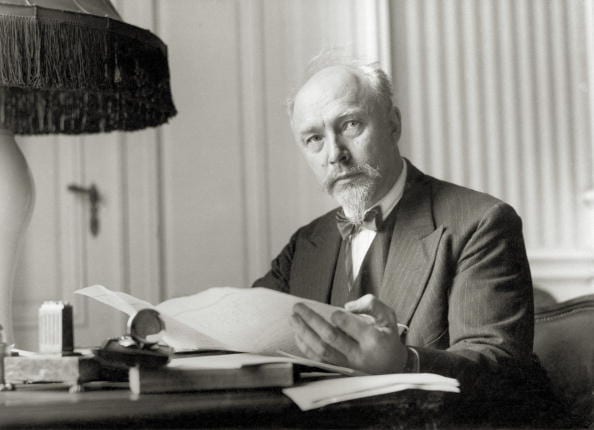
Hermann Graf Keyserling (20-07-1880 - 26-04-1946): German Philosopher regarded Bhagavad-Gita as "Perhaps the most beautiful work of the literature of the world".
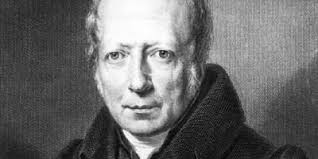
Wilhelm von Humboldt (22-06-1767 - 08-04-1835): was a Prussian philosopher, he pronounced the Gita as: "The most beautiful, perhaps the only true philosophical song existing in any known tongue ... perhaps the deepest and loftiest thing the world has to show".
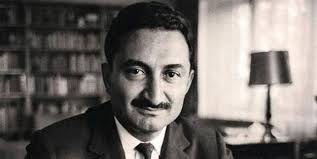
Bulent Ecevit (28-05-1925 - 05-11-2006): Turkish ex prime minister Bulent Ecevit, when asked what had given him the courage to send Turkish troops to Cyprus . His answer was "I was fortified by the Bhagavad Gita which taught that if one were morally right, one need not hesitate to fight injustice"

Lord Warren Hastings (06-12-1732 - 22-08-1818): Was the first governor general of British India wrote: "I hesitate not to pronounce the Gita a performance of great originality, of sublimity of conception, reasoning and diction almost unequalled; and a single exception, amongst all the known religions of mankind".

Sunita Williams (19-09-1965 - present-day): Was an American astronaut who holds the record for longest single space flight by a woman carried a copy of Bhagavad Gita and Upanishads with her to space, said "Those are spiritual things to reflect upon yourself, life, world around you and see things other way, I thought it was quite appropriate" while talking about her time in space.
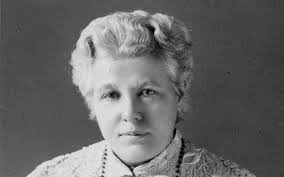
Annie Besant (01-10-1847 - 20-09-1933: said: "That the spiritual man need not be a recluse, that union with the divine Life may be achieved and maintained in the midst of worldly affairs, that the obstacles to that union lie not outside us but within us - such is the central lesson of the Bhagavad-Gita."
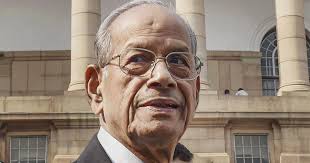
E. Sreedharan (12-06-1932 - present-day): said: "You see, spirituality has no religious overtones. The essence of spirituality is to make a person pure in his mind and his thoughts. When I started reading our old scriptures, like the “Baghavad Gita,” I found it was useful for day-to-day life, so I started practicing it. I consider it an administrative gospel, one that will help you in doing things like running an organization".
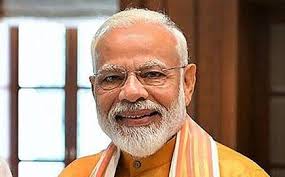
Shri Narendra D. Modi (17-09-1950 - present-day): Prime Minister of India, Shri Narendra Modi has strongly pitched the Bhagavad Gita as "India's biggest gift to the world". Shri Modi gifted The Bhagavad Gita according to Gandhi to the then President of the United States of America, Mr Barack Obama in 2014 during his US visit. As Shri Modi presents Gita to the leaders of the world, over a billion people find peace and purpose in these words of Krishna through Gandhi.
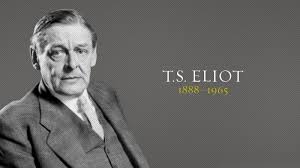
Thomas Stearns Eliot (26-09-1888 - 04-01-1965): Said that Indian philosophy had a huge influence on this American poet, who had studied Indian philosophy and Sanskrit during his days in Harvard, from 1911 to 1914.
In his poem titled The Dry Salvages, Elliot mentions the conversation between Krishna - Arjuna, from the Bhagvad Gita, to depict a connection between the past and the future, and to emphasize that one needs to follow divine will, rather than seek personal gains. As the famous lines from his poem reads:
Will suffer the trial and judgement of the sea,
Or whatever event, this is your real destination.
So Krishna, as when he admonished Arjuna
On the field of battle.
Not fare well, But fare forward, voyagers.
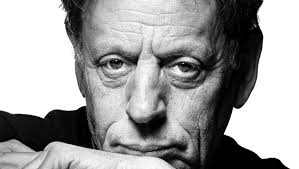
Philip Glass (31-01-1937 - present-day): The American composer who's often referred to as one of the most influential musicians of the late 20th century cited the Bhagvad Gita in one of his works. He composed an Opera, titled Satyagraha, which is loosely based on the life of Mahatma Gandhi and contains text from the Bhagvad Gita that is sung in Sanskrit during the performance.
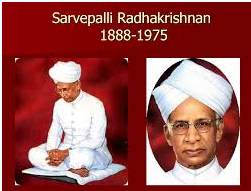
Sarvepalli Radhakrishnan (05-09-1888 - 16-04-1975): Was an Indian philosopher and first vice-president of India (5 September 1888 - 17 April 1975) Second President of India in 1962, his birthday is widely celebrated as teacher’s Day. “Though everything else is taken away from him, though he das to walk the streets, cold, hungry and alone, though he may know no human being into whose eyes he can look and find understanding, he shall yet be able to go his way with a smile on his lips, for he has gained inward freedom".
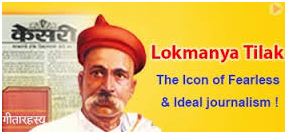
Lokmanya Tilak (23-06-1856 - 01-08-1920): Was an journalist, teacher, social reformer, lawyer and the first popular leader of the Indian Independence Movement. (23 July 1856 - 1 August 1920). The British colonial authorities called him Father of the Indian unrest”.
He was also conferred with the honorary title of "Lokmanya” which literally means “Accepted bij the people” as their leader. He said the following words about the Bhagavad Gita:
“The Gita was preached as a preparatory lesson for living worldly life with an eye tot Release, Nirvanan. My last prayer to everyone, therefore is that one should not fail to thoroughly understand this ancient science of worldly life as early as possible in one’s life”.
Wat kun je als spiritueel Leraar meer doen dan de zoekende en verlangende mens te helpen de woorden in dit bijzondere geschrift te herkennen in hun mind en in hun Hart, immers ieder mens die alleen nog maar gebonden is aan het fysieke lichaam en zich vaak (on)bewust vereenzelvigt met het illusoire ego, verlangt ondanks dit alles toch ten diepste naar de verlossing van het lijden en de antwoorden op de zingevingsvragen. Want ook in dit wereldse spel worden we regelmatig herinnerd aan het feit dat we veel meer zijn dan het resultaat van een evolutionair proces, dus meer dan een tijdelijk lichaam, het denken en het voelen. We zijn een Ziel die een reis maakt als onderdeel van een bewustwordings-proces dat ons uiteindelijk zal bevrijden.
Lees de Srimad Bhagavad-Gita met aandacht en verlangen om werkelijk te ontwaken, je zult misschien niet direct “verlicht” raken, maar het dagelijkse leven zal nog maar weinig geheimen voor je hebben. Lees met enige regelmaat, soms systematisch vanaf het begin, en soms sla je het boek gewoon ergens open en ontdek je wat het leven je aanreikt.
Zet je vragen, twijfels en/of onduidelijkheden op papier, en bespreek ze met je mede-reizigers of je Leraar. Oriënteer je en laat je inspireren door de verschillende uitvoeringen van de Bhagavad-Gita geschreven door de grote Meesters, Yogis en Swamis en laat je voeden en bemoedigen door hun commentaar en uitleg, The Bhagavad-Gita by Swami Sivananda, The Bhagavad-Gita by Paramahansa Yogananda, A Study of the Bhagavad- Gita by Swami Krishnananda, An Evolving Loving Commentary by V.S. Ferguson, The Bhagavad-Gita According to Gandhi by M. Gandhi, A Brief Summary of the Bhagavad- Gita by Swami Paramarthananda.
In de fysieke en digitale bibliotheek van de stichting Om-Shanti zijn bijna
tweehonderd verschillende boeken en artikelen over de Bhagavad-Gita.
We wensen u veel (nieuw) inzicht, geluk en bewustwording.
Namens de stichting Om-Shanti

© Om-Shanti: zie INFO PAPER - ALGEMEEN - Om-Shanti - Copyright (klik hier)
Studie en Academie Materiaal
Bhagavad Gita
The Ethics of the Gita
Dr Lakshman Patra
Head, PG Department of Philosophy, Vikram Dev (Auto) College,
Jeypore, Odisha, 764001, India
Abstract: Indian ethics aims at the spiritual growth of all men. The spiritual growth consists in the awareness or consciousness of atma-jnana or Brahma-Jnana. One realizes that the world is pervaded by Brahman. The particulars of the universe are potentially infinite. So everything is divine and every being kindred. Thus the concept of cosmic fraternity is the ethical paradigm, implied by this cosmo-centric ontology. During the present time the scientific and technological development has reached the apex, but the moral and spiritual values are constantly declining day by day. Though we have become economically rich, intellectually sound, and technologically advanced, still we are morally poor, and spiritually bankrupt. At this juncture of time, it is the philosophy of Gita which is out and out ethical, can really save the world from the overblooming catastrophe. Indian ethics is holistic in its approach. As an aspect of Indian ethics, the Gita’s ethics teaches how to harmonize an individual’s desires, emotions and ambitions in order to lead a harmonious life on the earth with ultimate end of self realization and freedom. The Gita is a hand book of ethics. Its teachings are rational and scientific in approach. The Gita’s ethics is discussed mostly in the concepts like, svabhava, svadharma and niskamakarma. In my paper I shall be discussing the concept of niskamakarma which constitutes the rockbutton of the Gita’s ethics. Niskakarma is the Philosophy of Karmayaga of the Gita which explicates that one has to perform actions with right ideation, having no desire for the consequences. My approach will be critical and analytical. hagavad-Gita, which means 'the songs of the Lord'. The Gita comes to us as a part of Bhisma.
Om-Shanti: - Studie en Academie Materiaal - Bhagavad Gita - Deel 1 - 01
Boekbespreking Bhagavad Gita
Exploring the Bhagavad Gita
Philosophy, Structure and
Meaning, Routledge 2016
Ithamar Theodore
The Bhagavad Gītā remains to this day a mainstay of Hinduism and Hindu Studies alike, despite the profusion of books written on it over the centuries. While the Gītā’s profundity is evident, its meaning most certainly is not. Is there a unity within the Bhagavad Gītā? The author proposes a unifying structure of this seminal Hindu work, identifying multiple layers of meaning at play. He provides a new translation of the full text of the Bhagavad Gita, divided into sections, and accompanied by in-depth commentary, rendering this ancient Indian classic accessible to scholars and aspirants alike.
The Bhagavad Gita
A Critical Introduction
Routledge 2020
Ithamar Theodor
This book is a systematic and comprehensive introduction to one of the most read texts in South Asia. The Bhagavad-Gītā is at its core a religious text, a philosophical treatise and a literary work, which has occupied an authoritative position within Hinduism for the last millennium. This book brings together themes central to the study of the Gita, as it is popularly known - such as the Bhagavad-Gītā's structure, the history of its exegesis, its acceptance by different traditions within Hinduism, and its national and global relevance. It highlights the richness of the Gita's interpretations, examines its great interpretive flexibility and at the same time offers a conceptual structure based upon a traditional commentarial tradition. With contributions from major scholars across the world, this book will be indispensable for scholars and researchers of religious studies, especially Hinduism, Indian philosophy, Asian philosophy, Indian history, literature and South Asian studies. It will also be of great interest to the general reader.
Song of Your Soul
A New Translation of Bhagavad Gita
(Part 2), New Books Network 2021
Atmadarshan Laura Santoro
Raj Balkaran interviews Santoro co-owner of Dharma Kshetra Yoga and author of this coming book on the role of yoga and Indian spirituality in fostering life wisdom. They discuss her rich relationship to the Bhagavad Gītā and issues of cultural appropriation in modern yoga movements.
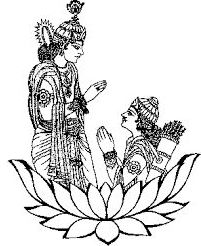
Mahabharata
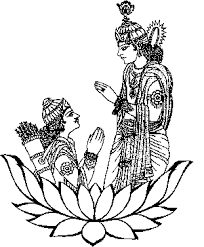
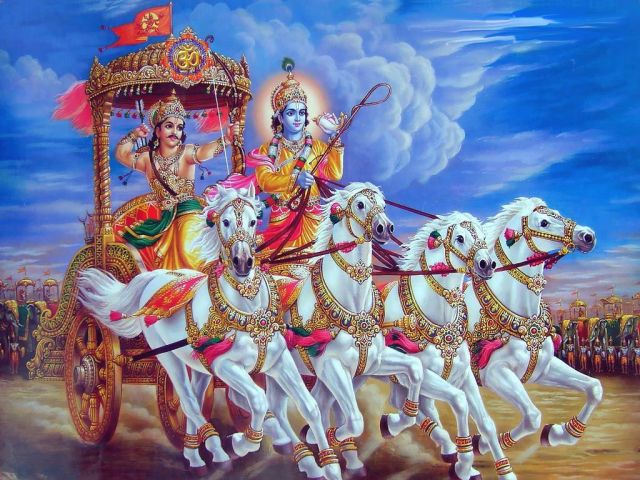
Boekbespreking Mahabharata
Philology and Criticism
A Guide to Mahabharata Textual
Criticism, Anthem Press 2018
Vishwa Adluri and Joydeep Bagchee
The Hindu great epic, Mahābhārata, exists today in hundreds of variant manuscripts across India. These manuscripts were painstakingly examined, sorted and reconstituted into the official Critical Edition of the Mahābhārata. Is the Critical Edition a viable means of studying India's great epic? While several scholars critique this undertaking project, the authors present a rigorous defense of the Mahābhārata's Critical Edition.
Krishna's Lineage
The Harivamsha of Vyasa's Mahabharata
Oxford University Press 2019
Simon Broadbeck
While typically circulating as a separate text, The Harivamsha forms the final part of the Mahabharata storyline. Beyond this, it is rich storehouse of cosmological, genealogical, theological materials, detailing the biography of Krishna (avatar of the Hindu great god Vishnu), along with much more mythic material.
Vyasa Redux
Narrative in Epic Hindu Mahabharata
Anthem Press 2019
Kevin McGrath
The book examines the complex and enigmatic Vyāsa, both the primary creative poet of the Sanskrit epic Mahābhārata and a key character in the very epic he composes. In doing so the author focuses on what he considers the late Bronze Age portions of the epic feature prioritizing the concerns if the warrior class. The discussion distinguishes between plot and story and how this distinction comes to bear on the differences between preliterate and literate phases of the epic’s compositional history.
In Dialogue with the Mahabharata
Routledge 2020
Brian Black
This book offers the first extensive study of the dialogue form in the Mahābhārata. Despite its importance, the variety of uses and implications of dialogue in the Mahābhārata remain relatively unexplored, which leaves a significant gap in the understanding of this key work of Indian literature. Dialogue is a recurring and significant feature of Indian religious and philosophical literature generally, but nowhere is it explored more elaborately and more profoundly than in the Mahābhārata. This book therefore, examines the details of some of the central dialogical encounters in the text, including, structural features; intra-textual relationships with other dialogues; implicit methods of reasoning; and potential avenues for a meaningful engagement with interlocutors beyond the text. This attention to the dialogue form not only brings out otherwise unexplored aspects of the text's teachings, but also highlights aspects of the Mahābhārata that will have particular relevance to modern readers. This is a fresh perspective on the Mahābhārata that will be of great interest to any scholar working in Religious Studies, Indian/South Asian religions, Comparative Philosophy, and World Literature.
The Mahabharata
Penguin 2015
Bibek Debroy
Dispute over land and kingdom may lie at the heart of this story of war between cousins the Pandavas and the Kouravas but the Mahabharata is about conflicts of dharma. These conflicts are immense and various, singular and commonplace. Throughout the epic, characters face them with no clear indications of what is right and what is wrong; there are no absolute answers. Thus every possible human emotion features in the Mahabharata, the reason the epic continues to hold sway over our imagination.
Many Mahabharatas
Suny Hindu Studies 2021
Nell Shapiro Hawley and Sohini Sarah Pillai
This book is an introduction to the spectacular and long-lived diversity of Mahābhārata literature in South Asia. This diversity begins with the Sanskrit Mahābhārata, an early epic poem that narrates the events of a catastrophic fratricidal war. Along the way, it draws in nearly everything else in Hindu mythology, philosophy, and story literature. The magnitude of its scope and the relentless complexity of its worldview primed the Mahābhārata for uncountable tellings in South Asia and beyond. For two thousand years, the instinctive approach to the Mahābhārata has been not to consume it but to create it anew. Because of its historical and linguistic breadth, its commitment to primary sources, and its exploration of multiplicity and diversity as essential features of the Mahābhārata’s long life in South Asia, the book constitutes a major contribution to the study of South Asian literature and offers a landmark view of the field of Mahābhārata studies.
Arti Dhand on the Mahabharata
New Books Network 2021
Arti Dhand
What does the Mahābhārata - a gargantuan epic tale from ancient India - have to teach about life wisdom? Learn three core themes of the ancient Sanskrit epic - along with a story of one of its most compelling female characters - from Dr. Arti Dhand, Associate Professor at the University of Toronto and host of The Mahabharata Podcast.
Feminine Journeys of the Mahabharata
Hindu Women in History, Text and
Practice, Palgrave Macmillan 2021
Lavanya Vemsani
The Mahabharata preserves powerful journeys of women recognized as the feminine divine and the feminine heroic in the larger culture of India. Each journey upholds the unique aspects of women's life. This book analytically examines the narratives of eleven women from the Mahabharata in the historical context as well as in association with religious and cultural practices. Vemsani brings together history, myth, religion, and practice to arrive at a comprehensive understanding of the history of Hindu women, as well as their significance within religious Indian culture. Additionally, Vemsani provides important perspective for understanding the enduring legacy of these women in popular culture and modern society.
Kunti: The Sati Series II
Pan Macmillan India 2021
Koral Dasgupta
Kunti, a rare matriarch in the Mahabharata and one of the revered Pancha Satis, holds an unforgettable position in the Indian literary imagination. Yet, little is known about the fateful events that shaped her early life. Taking on the intricate task, Koral Dasgupta unravels the lesser-known strands of Kunti’s story: through a childhood of scholarly pursuits to unwanted motherhood at adolescence, a detached marriage and her ambitious love for the king of the devas. After the remarkable success of Ahalya, the first book in the Sati series, Kunti: this book presents a brilliant and tender retelling of a story at the heart of our culture and mythology. In the Sati series, Koral Dasgupta explores the lives of the Pancha Kanyas from Indian mythology and reinvents them in the modern context with a feminist consciousness.
Vedas
The Indian Cultural Tradition is
Really Sitting on a Kind of an Unbelievable
Treasure for the World: Prof. James Hartzell
Varsha Venkataraman, June 7, 2022
Prof James Hartzell, a neuroscientist and Sanskrit translator published a study on the “Sanskrit Effect”. The birth of this study is an interesting turn of events. A ‘post- graduate’ Prof Hartzell sat in his neuroscience class and posed a question to his professor about the Vedic recitation tradition while they discussed the London taxi driver study. His professor, absolutely thrilled by this information, asked him to collaborate with the National Brain Research Centre to investigate the neuroscience associated with this tradition.
It so happened that Prof Hartzell was in India at a translators conference at the The Central Institute of Higher Tibetan Studies. And he thought oh, let me take the opportunity and visit Prof Nandini Chatterjee Singh (currently a cognitive neuroscientist at UNESCO MGIEP), for that. So, he spent a couple of nights at NBRC.
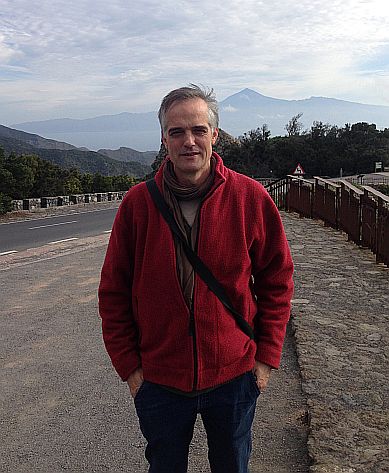
He then visited (Late) Professor RK Sharma, whom he had known for decades because they had worked together in New York and he visited Harvard sometimes and some of his professors also knew Prof Sharma well. At the time, Prof Sharma was known as the best Sanskrit speaker in India. Prof Hartzell sought his advice on this study. “He just listened to me without saying a word. I explained the logic behind all this because the question from a neuroscientific point of view is also very interesting: it had not been thought it was possible to master the degree of text memorization that the Vedic pandits do. The neuroscientific community did not think that this was technically possible for the brain. And I kept saying to them, that it exists, and they had been doing this for thousands of years,” expressed Prof Hartzell.
Prof Sharma was thrilled with the concept behind the study and he told Prof Hartzell to go to Ujjain and meet the Vice Chancellor of the Sanskrit University there, who also happened to be the national head of Maharishi Sandipani Rashtriya Ved Vidya Pratishthan. Prof Hartzell spent several hours with him singing poetry, and they spoke of the project too. He then took Prof Hartzell to meet the General Secretary of the Maharishi Sandipani Rashtriya Ved Vidya Pratishthan, who then took him to a National Vedic recitation event.
“There were all these Pandits reciting from different traditions. The General Secretary then asked me to get on stage and tell the community of my project. Firstly, the people were very receptive and enthusiastic about this idea, and secondly, they started asking me some impossible questions, for instance, can you show the effect of Vedic recitation on DNA. From a scientific point of view, that is an interesting question. Doing that is a very different story. We then went back to his Centre and met with his colleagues, and some of the pundits and so on. I found out that the Government Vedic organisation sponsors a whole bunch of Vedic recitation schools around the country which they've been doing, I think, since the 1950s. We decided to only work with the pundits from the government institutions,” explained Prof Hartzell.
And there is a certain advantage to that scientifically, which is that there is always a question- if you are a fantastically good violin player right, there is always a question, are you somebody who is genetically predisposed to be a fantastic good? Maybe you came from two parents who are musicians. You could not really separate out which part was the genetic predisposition and which part was related to having spent 20 years at a music school training eight hours every day.
Prof Hartzell wanted to see if there is a difference in the brains of the pundits relative to controls that we can reasonably and confidently say is related to their practice rather than that they were genetically predisposed.
Indica Soft Power was in conversation with Prof Hartzell to learn more about his journey with this study.
What made you gain interest in Sanskrit and to what degree had to learn?
Well, I did have several academic degrees in Sanskrit. I did an undergraduate degree at Harvard in Sanskrit and Indian studies. Then I did a masters there, and part of a PhD. I then ended up at Columbia University, where I finished my PhD. So I did another masters’ at Columbia in Indian religions. Primarily, I would say I was trained as a translator. So I'm competent in translating Sanskrit and Tibetan texts from a former time. That is my primary background as a trained Western academic translator.
It was quite challenging of course. But it is the training. We had classes; typically, in a class you would not have more than half a dozen people, maybe six or seven people at the most. The way the system I was training under works is you say, okay we're going to read this text for instance, in the second year, you read the Bhagavad Gita. So you read the entire Bhagavad Gita, and then every class the Professor assigns 20 verses or something like that. And then you have to go home and sit with your dictionary and other books and everything, and you have to figure out how to translate it and be able to explain the grammar.
You then go to class, sit around the table and the professor goes around the table. He says, “okay do Chapter three verse 23 and 24,” and you have to translate.
We also did other texts such as Shankaracharya’s or Kalidasa’s And also, I was also trained in something which is quite specific, it is known as translation Tibetan, where you have Sanskrit texts which were translated formally by the Tibetans, in teams, about 1000 years ago. They created things in Tibetan to deal with the Sanskrit syntax. So, for instance, the types of prefixes and suffixes which are super common in Sanskrit yet do not exist in the Tibetan language, so they created ways to translate those very specific links. So we were trained and all this kind of specialised stuff. And that's my background.
What fascinated you about entering this particular study? Why the pundits?
My interest has been more of a scientific one rather than being religious, and it has been for a long time, I mean effectively, I think, from the very beginning, when I was eighteen, let's say when I started studying all these things. You can imagine, when you are 16 or 17, and you hear stories about levitating or you know also kind of magic tricks, and you are like oh that sounds cool… is that real.. is that true or is that just a story right.
I was raised in New York. Science seemed normal. Yes, science works, you can build computers and aeroplanes and things. My question from the very beginning was that of the many, many things from the big Indian tradition or the big Yoga tradition or the traditions of India, Tibet, China and Japan Southeast Asia, and all their different yoga practices etc, are real in a scientific sense? Can you measure it? Is it reproducible? Are the stories true on these kinds of things so that always has motivated my interest in the subject area. And then I got to the point where I had the opportunity to say all right, well, what if we start building a domain of genuine scientific research on this whole broad space that I just referred to.
And I had an opportunity to do that because I was doing a cognitive neuroscience PhD in Italy and they had an arrangement with the Indian National Department of Science and Technology with our particular university. They had set up, I think nanotech collaborations and genetics, they had a bunch of different collaborations going on with the researchers at this particular university, where I was. They were then looking to try to do something in neuroscience. So the story is just funny because it is a true story. I was a master student at the time before I did the PhD and we were covering the London taxi driver study. In the course, the Prof, a British guy says it would be kind of cool if we had something similar like this with regard to language.
So I raised my hand and asked my prof if he had heard about the Vedic recitation tradition in India. And he said no, so I explained to him. Because it was one of the many things we studied when I did my training. And I had been thinking at the back of my head, how to approach the science of the Sanskrit tradition, broadly speaking, like where to begin, because you can start under different places right. You could start with Hatha yoga, you could start with Raja yoga or you could even start with pranayama. I wanted to start with something that has never been done before.
It is respectful to the tradition to start at the beginning, so we started with the Vedas. I must admit that I didn't know a lot about the recitation tradition, but I knew it existed and I knew it had been around for 3000 years or whatever, or more probably. So, then I explained to my prof and he was thrilled. He said to me that the university has this collaboration with the Indian National Department of Science & Technology and that they had been looking for a neuroscience project. That was actually what happened. A team of professors, basically from our Centre for Mind Brain Sciences, went over to India. I was unable to join them on the trip to India. However, I prepared a presentation proposing this project to do a cross sectional study of the pundits who recite the Vedas.
At the time we had not selected which Vedic tradition. We wondered if we should do a cross sectional study along with structural and resting state scans, and maybe some DTI scanning. So the team went around to a bunch of different research centres and when they got to the The National Brain Research Centre, Dr Nandini Singh, who unfortunately did not have the time to work with us on this, told us to send a researcher to NBRC, and I went over and the process started.
Why did you choose the Yajur Veda specifically?
The largest concentration of Vedic pandits in the sort of driving distance from the NBRC are the Yajur Veda pandits because the Yajur Veda has a very strong tradition in the Ganges river Valley. So it was a practical decision. Also, those involved in the project were associated with the government and they organised the pundits in terms of they spoke to the schools and they figured out who was willing to participate.
Prof Nandini introduced us to a fellow researcher Tanmay Nath (now a postdoc in the USA), who was critical to the success of the project. He went to each of the schools and met with the pundits and explained the whole thing to them.
We had a small bump on the road when we chose the Yajur Veda pandits because when you are in an MRI scanner you cannot move. How are they going to recite if they have to use hand gestures!
I went to Tirupati, to the university and I talked to the university head there as I required his approval. He organised for a few Rig Vedic pandits to come and recite. Now they, for instance, do not use hand gestures. And why do they not use hand gestures? Because they are reciting poetry, and pure poetry has all of its rules so it is easy to stay exactly on time and in sync with your co-reciter. The Yajur Veda has a lot of prose and poetry. But when you are reciting prose, you have to have a way to coordinate the timing between you and the other. In fact the hand gestures are basically the syntax. And, it allows the reciters to stay in sync with each other as well.
In layman terms, can you explain what the main inference of the study was?
I was down at Ujjain at a government office, and I remember there were three or four pundit teachers who came in. I decided to film their recital and they were reciting a section of something I cannot seem to remember now. I was very excited, you know, and they were using these hand gestures, and then they just suddenly stopped. I said to my host who was their boss, ‘what's the matter? what happened?’ He says they had made a mistake. I said that it doesn’t matter. The Pundit immediately said that it might not matter to you, but it matters to them, because they know that is how precise.
The simplest main inferences if you train at that level of precision, the grey matter density (so called, which is a curious word in science), in your brain will be significantly more in certain areas, than in people who do not train. So a correlation seems to be there, and this raises more questions but that's the simplest part of the study.
Have you considered working on a similar project with Sama Veda?
Yeah it is actually a different type of practice in a certain way. We initially considered it and one of the things that Nandini did which we did not publish was she did a kind of sound envelope analysis of Gregorian chants compared to some of the Sama Veda chants and the curious thing was that they were quite similar in a certain way. When she compared the Gregorian chants to Rig veda or Yajur veda, the sound envelope was quite different and we thought Oh, this is interesting.
In terms of future studies you know if you rang some golden bell in some heaven somewhere and said all right, you can do any study you want, and you have the resources for it and the people willing to work together on it, then I would follow up with it. I would love to study the Rig veda, work more with the Yajur veda. I would explore Sama and Atharva Veda, Kalidasa, and a whole bunch of stuff. And also what we did not do, and were planning to do is to do the functional study in the scanner. And there you have to try to partial out: is there a direct effect of reciting? Do those specific areas of the grey matter show higher activity? No one has ever tested. To do this study would be in that direction because then you want to go deeper and you want to see what is going on there. Are there different levels of activity in those parts of the grey matter that have higher density and structure, when the pundits recite Sanskrit and when they recite Yajur veda particularly?
The next thing you would want to know is if this is specific to only Sanskrit. For instance, there might be the case that anything they recited would trigger a very strong muscle memory in their brain. You know they are like bulked up and from a memory point of view or for instance, if they recited Hindi poetry.
The Indian cultural tradition, broadly speaking, is really sitting on a kind of an unbelievable treasure for the world. Since I am no longer working at that research centre and, at the moment I am not actually part of any research I do not know. If somebody comes along and says let's do it with the right kind of resources, in terms of funding, pundits, the right authorities to work with, I would jump at it.
Education
Harvard University - 1977 - 1987 - Master of Arts (MA) Sanskrit and Indian Studies.
Columbia University New York - 1993 - 1995 - M. Phil. Religion/Religious Studies.
Colombia University New York - 1995 - 1997 - PhD - Religion Sanskrit & Tibetan PhD thesis: Tantric Yoga: A Study of the Vedic Precursors, Historical Evolution, Literatures, Cultures, Doctrines and Practices of the 11th Century Káshmitri Shaivite and Buddhist Unexcelled Tantric Yogas.
Universtity of KwaZulu - Natal - South Africa 2004 - 2013 - MSc. Plant Pathology/Phytopathology.
Center for Mind/Brain Sciences - University of Trento, Italy - 2011 - 2015
PhD - Cognitive and Brain Sciences PhD thesis: “Structural differences in grey and white matter of the brains of verbal memory specialists: the case of professional Vedic Sanskrit Pandits.”
University of Trento, Italy - 2009 - 2011 - MSc. Cognitive Science (Cognitive and Brain Sciences).
IE University, Spain - 2020 - 2021 - Executive MBA.
Work
Researcher/Entrepreneur
Donsotia - San Sebastian, Spain. Developing plans for new R&D organization focused on both envionmental science/green energy and research into human health/yogic practices March 2020 until today.
Postdoctoral Researcher
Basque Center on Cognition, Brain & Language - San Sebastian, Spain 2017- 2020.
Consultant
Columbia University Center for Buddhist Studies/American Institute of Buddhist Studies March 2016 until today.
Guest Researcher
Center for Mind Brain Sciences University of Trento - Italy October 2010 - until today.
Source Website:
Studie en Academie Materiaal
Vedas
I Am (K)Not the Body
by
Pradeep Apte
Introduction
I had a collection of handwritten notes that were prepared while going through two books, the ‘Guru Vachaka Kovai’ (the garland of Guru’s sayings) and ‘Padamalai’. These are teachings of Bhagwan Sri Ramana Maharshi recorded in Tamil verse by his disciple Muruganar made generously available to the whole world in English by Mr. David Godman and his team. I had the feeling ‘I am not the body’ when I held these books in hand even before I had read them. Thus I started taking down notes with this idea in mind and this collection is the outcome of that effort. This soft copy was only recently prepared as I felt that many spiritual aspirants may find them useful as I did.
Om-Shanti: - Studie en Academie Materiaal - Vedanta - Advaita - Deel 4 - 01
Boekbespreking Vedas
Embodying the Vedas
Traditional Vedic Schools of Contemporary
Maharashtra. De Gruyter 2017
Borayin Larios
This book probes the backbone of what makes Hinduism the world’s oldest living tradition: the unbroken chain of transmission of Vedic texts composed over 3,000 years ago, originating circa 1750-1200 BCE. What does the process of that transmission look like? What does it take to apprentice to learn the Vedic corpus? Why is there an emphasis on precise ritual enunciation of these utterances even above and beyond their semantic meaning? Join me as I talk with Dr. Borayin Larios, Assistant Professor at the Institute for South Asian, Tibetan and Buddhist Studies (Vienna) about his work on the traditional “gurukula” education and training of Brahmins. Based on his study of 25 contemporary Vedic schools across the state of Maharashtra, we discover how contemporary Brahmin males learn with scrupulous care how to recite, memorize and ultimately embody the Vedas.
Pradyumna
Lover, Magician and Scion of the
Avatara, Oxford University Press 2019
Christopher Austin
This is the first sustained study of an important figure in Hindu narrative, one largely obscure to readers and scholars alike: Krsna's son Pradyumna. In this book Austin traces the evolution of Pradyumna's persona, placing it in historical context, across its iterations over time. He highlights the very gendered features of Pradyumna's Oedipal tale.
The Goddess and the Sun in Indian Myth
Power, Preservation and Mirrored Mahatmyas
in the Markandeya Purana, Routledge 2020
Raj Balkaran
Why are the myths of the Indian Great Goddess, Durgā, found in the Mārkandeya Purāna framed by myths glorifying the Sun, Sūrya? And why do these glorifications mirror each other in both content and form? In exploring these questions, this book argues for an ideological ecosystem at work in the Mārkandeya Purāna privileging worldly (pravrtti) values, of which Indian kings, the Goddess (Devī), the Sun (Sūrya) and sage Mārkandeya himself are paragons.
The Bloomsbury Research Handbook of Vedanta
Bloomsbury Academic 2020
Ayon Maharaj
This book brings together a distinguished team of scholars from philosophy, theology, and religious studies to provide the first in-depth discussion of Vedanta and the many different systems of thought that make up this tradition of Indian philosophy. Emphasizing the historical development of Vedantic thought, it includes chapters on numerous classical Vedantic philosophies as well as the modern Vedantic views of Sri Ramakrishna, Sri Aurobindo, and Romain Rolland. The volume offers careful hermeneutic analyses of how Vedantic texts have been interpreted, and it addresses key issues and debates in Vedanta, including religious diversity, the nature of God, and the possibility of embodied liberation. Venturing into cross-philosophical and cross-cultural territory, it also brings Vedanta into dialogue with Saiva Nondualism as well as contemporary Western analytic philosophy. Highlighting current scholarly controversies and charting new paths of inquiry, this is an indispensable research guide for anyone interested in the past, present, and future of Vedanta and Indian philosophy.
Maya in the Bhagavata Purana
Human Suffering and Divine Play
Oxford University Press 2020
Gopal K. Gupta
The idea of Maya pervades Indian philosophy. It is enigmatic, multivalent, and foundational, with its oldest referents found in the Rig Veda. This book explores Maya's rich conceptual history, and then focuses on the highly developed theology of Maya found in the Sanskrit Bhagavata Purana, one of the most important Hindu sacred texts. Gupta examines Maya's role in the Bhagavata's narratives, paying special attention to its relationship with other key concepts in the text, such as human suffering (duhkha), devotion (bhakti), and divine play (lila). In the Bhagavata, Maya is often identified as the divine feminine, and has a far-reaching influence. For example, Maya is both the world and the means by which God creates the world, as well as the facilitator of God's play, paradoxically revealing him to his devotees by concealing his majesty. While Vedanta philosophy typically sees Maya as a negative force, the Bhagavata affirms that Maya also has a positive role, as Maya is ultimately meant to draw living beings toward Krishna and intensify their devotion to him.
The Skandapurana Project
The Varáha Cycle and the Andhaka Cycle Continued
Vol. V Adhyayas 96 - 112, Brill 2021
Peter Christiaan Bisschop and Yuko Yokochi
This interview features the authors and their work on the monumental Skandapurāna project. Started in the 1990's, the project is aimed at creating a critical edition of the Skandapurāna along with documenting its variations over time as well producing important studies of the text. Their latest installment of this project (Volume 5, featuring Chapters 92-112 of the Skandapurāna, with an introduction and annotated English synopsis) addresses the incorporation of Vaisnava mythology in the text.
The Visnu Purana
Ancient Annals of the God with Lotus Eyes
Australian National University 2021
McComas Taylor
Listen in as we speak with McComas Taylor (Associate Professor and Reader in Sanskrit, The Australian National University) about his brand-new translation of the Visnu Purāna. This is the second time the Visnu Purāna has been translated into English, the last time being nearly two centuries ago. Attentive to out the aesthetics of out-loud utterance, this beautiful translation is in blank-verse, faithful to the original Sanskrit, and available Open Access. We also speak about the World Sanskrit Conference, an upcoming Sanskrit Narrative volume, and studying Sanskrit online with McComas Taylor.
First Words, Last Words
New Theories for Reading Old Texts in Sixteenth
Century India, Oxford University Press, USA 2021
Yigal Bronner and Lawrence J. McCrea
This book charts an intense “pamphlet war” that took place in sixteenth-century South India. The authors explore this controversy as a case study in the dynamics of innovation in early modern India, a time of great intellectual innovation. This debate took place within the traditional discourses of Vedic Hermeneutics and its increasingly influential sibling discipline of Vedanta, and its proponents among the leading intellectuals and public figures of the period. This book traces both the issue of sequence and the question of innovation through an in-depth study of this debate and through a comparative survey of similar problems in Judaism, Christianity, and Islam, revealing that the disputants in this controversy often pretended to uphold traditional views, when they were in fact radically innovative.
